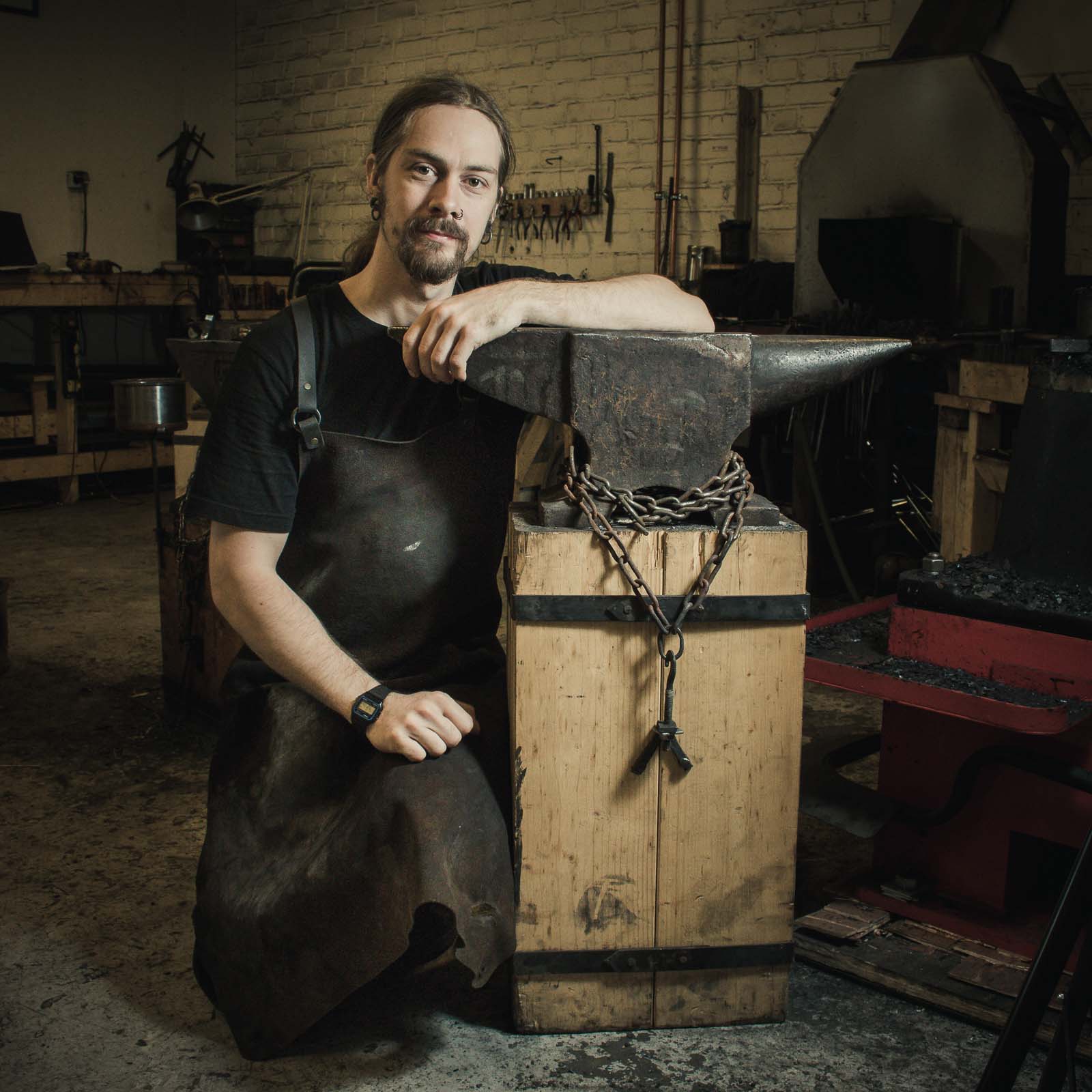I quite often mention that I'm using traditional methods. But what do I really mean when I'm talking about traditional methods? I will share my thoughts about traditional blacksmithing in this article, it would be interesting to hear your thoughts as well. So if this blog post brings up thoughts, feel free to share in the comment section down below.
When looking at the history of forging, the tools and techniques didn’t change so much from the beginning of the Iron Age until the 19th century. So for many hundreds of years the same methods and tools have been used to shape and forge iron into tools, household items, art and Jewelry etc. It is these methods I am thinking about when I'm saying traditional methods. So if I have an item that is modern made with traditional methods, the same item could be reproduced in a viking age forge.
During the 19th century the industry took a step forward and the machines were doing more of the work human hands did before. Also new technologies became more common, such as welding (which is a fabrication process that joins materials) which changed a lot and the need for a blacksmith started to take off.
How about the power hammers, are those traditional?
Even if versions of power hammers (so called triphammers) have been around for a very long time (at least since medieval times in Europe) some might consider them not to be traditional. But I see it like this: back in the days there were usually at least two smith's working together, it wouldn't be possible for me to do all these things alone. When forging heavier stuff I would need a sledgehammer and for that I need someone to hold the working piece. So I see the power hammer is just a replacement for the 2nd smith. It doesn't take away much from the handwork. It is a little bit easier to work with since the hammer always will strike straight and it will also be in a good mood all the time, but besides that it is pretty similar to working another smith.

Other modern tools I use, but don't think they take too much away from the craft:
I do use the Oxy-acetylene torch from time to time when forging and when soldering, this is simply to speed up the process. I am using the belt sander or angle grinder sometimes instead of files for the same reason. I could use the forge for these occasions but it would affect the price quite much, same goes when cutting the material into work pieces. When I buy material (if I am not reusing old iron) I get it in 6 meter long bars. I use a saw to cut it into more manageable lengths. Besides that I think that a Viking age blacksmith would feel like home also in my forge. And with that being said, I think it is important to keep the old skills and techniques alive so I try to balance it as best as I can.
Read more about me and my forge here
One can question if it's better to go 100% all in, and just work with hand tools and never use power tools?
Personally I see a risk with that and the risk is that the work simply gets too expensive which leads to that the blacksmith can’t make a living out of it and sooner or later we won't have any blacksmiths around and the skill and knowledge dies out. I think it’s better to find a balance to keep the blacksmiths around and still use the traditional methods and be able to inform and show these skills. That is how I see it and what I am trying to do. What do you think?

